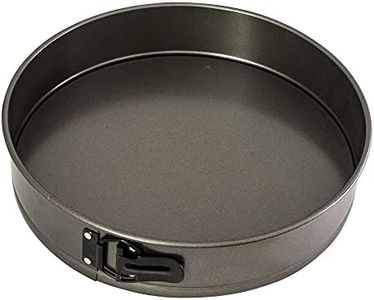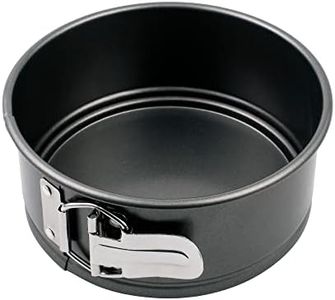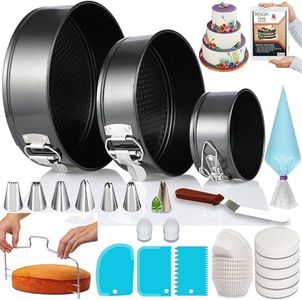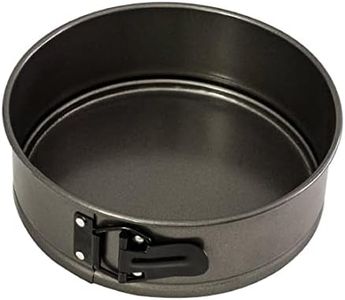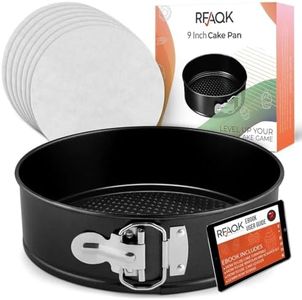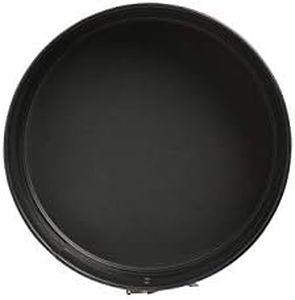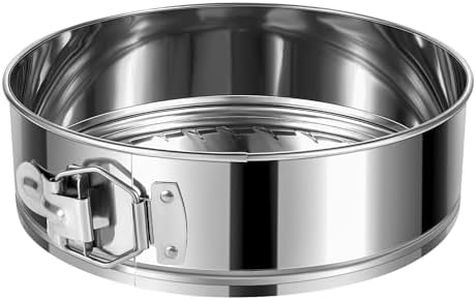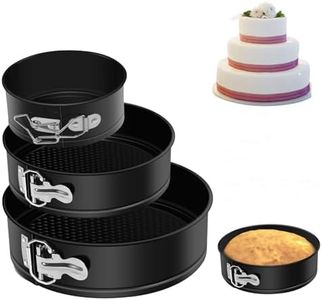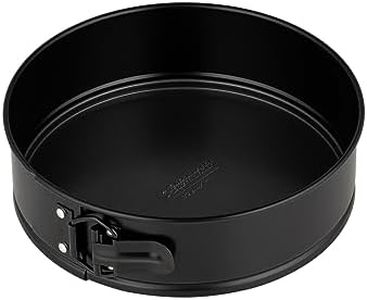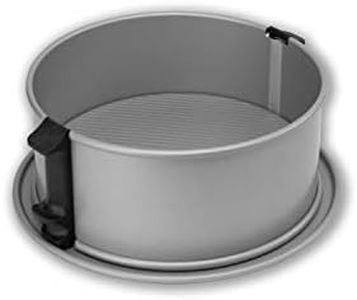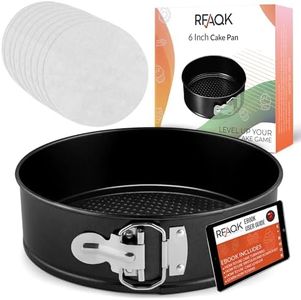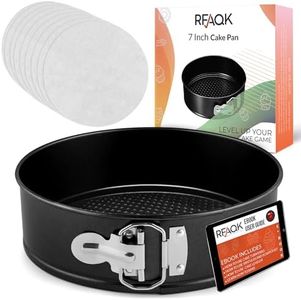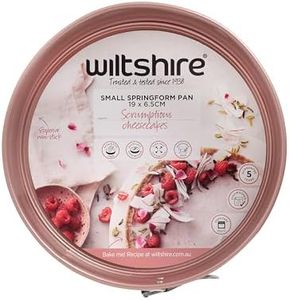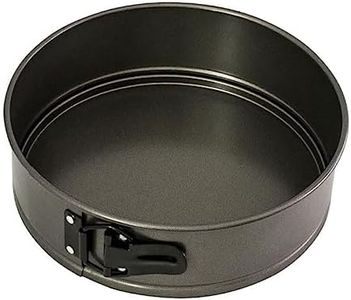We Use CookiesWe use cookies to enhance the security, performance,
functionality and for analytical and promotional activities. By continuing to browse this site you
are agreeing to our privacy policy
10 Best Springform Pans
From leading brands and best sellers available on the web.Buying Guide for the Best Springform Pans
When choosing a springform pan, it's important to consider your specific baking needs and the types of recipes you enjoy. Springform pans are most often used for cheesecakes, tortes, and other delicate desserts that need easy removal from the pan. Think carefully about the features that will make baking and cleanup easier for you and help your cakes come out perfect every time.Size (Diameter)Size refers to the diameter of the springform pan, usually measured in inches or centimeters. This is important because recipes are often written for a particular size pan, and changing the size can affect bake times and the thickness of your cake. Common sizes are 6, 8, 9, and 10 inches. Smaller pans are great for small servings or mini cakes, while larger pans are suitable for bigger gatherings. It's a good idea to choose a pan size based on the typical number of servings you need. If you frequently bake for groups, a larger pan might be best, but if you're baking for one or two, a smaller one can help avoid waste.
MaterialSpringform pans are usually made from materials like nonstick-coated steel, aluminized steel, glass, or silicone. The material affects heat conduction and durability. Metal pans conduct heat well and are sturdy, making them a good choice for evenly baked cakes. Nonstick-coated pans are popular because they help release cakes without sticking, but the coating may wear off over time. Glass pans let you see the sides of your cake, which is nice for presentation, but they can be heavier and may not heat as evenly. Silicone pans offer easy release but might not give crisp edges. The right material depends on your baking habits and preferences; if you want easy cleanup and release, nonstick-coated metal is usually a safe bet.
Leakproof DesignA good springform pan should have a well-fitting base and sides to prevent batter from leaking out, especially with thin mixtures like cheesecakes. Some pans have extra sealing mechanisms or tight-fitting grooves at the bottom. While no pan is 100% leakproof, sturdier construction and newer sealing designs reduce this issue. If you make recipes with runny batters, look for pans specifically labeled as leakproof or those with a solid, reliable locking system.
Ease of Release (Latch Mechanism)The hallmark of a springform pan is the latch or buckle on the side, which allows the sides to expand and separate from the base. A strong, smooth-closing latch is crucial for easy removal of delicate desserts. If the latch feels flimsy or hard to operate, it could break with repeated use. When choosing your pan, check that the latch is sturdy, opens and closes smoothly, and forms a tight seal—making the baking process smoother and the results cleaner.
DepthThe depth of a springform pan determines how thick your cakes can be. Standard depth is usually about 2.5 to 3 inches, but you may find some deeper pans. A deeper pan is useful for taller cheesecakes or layer cakes, while shallower pans are better for certain tortes or pies. Think about the types of recipes you like. If you want to experiment with multi-layered desserts or classic New York–style cheesecakes, opt for a pan with greater depth.
Ease of CleaningCleaning can be tricky with springform pans because of the moving parts and possible batter leaks. Some pans are dishwasher safe, which is convenient, while others need handwashing to preserve the finish or latch. If you prefer quick cleaning, check for dishwasher-safe labeling. Otherwise, consider how much effort you want to spend keeping your pan in good condition and whether you're willing to handwash to prolong its life.
